

CarExpert.com.au
The CarExpert team's favourite cars of 2025
1 Hour Ago
If you ever needed an excuse to avoid buying an SUV this is it. The Audi RS6 is fast, practical and... just look at it.
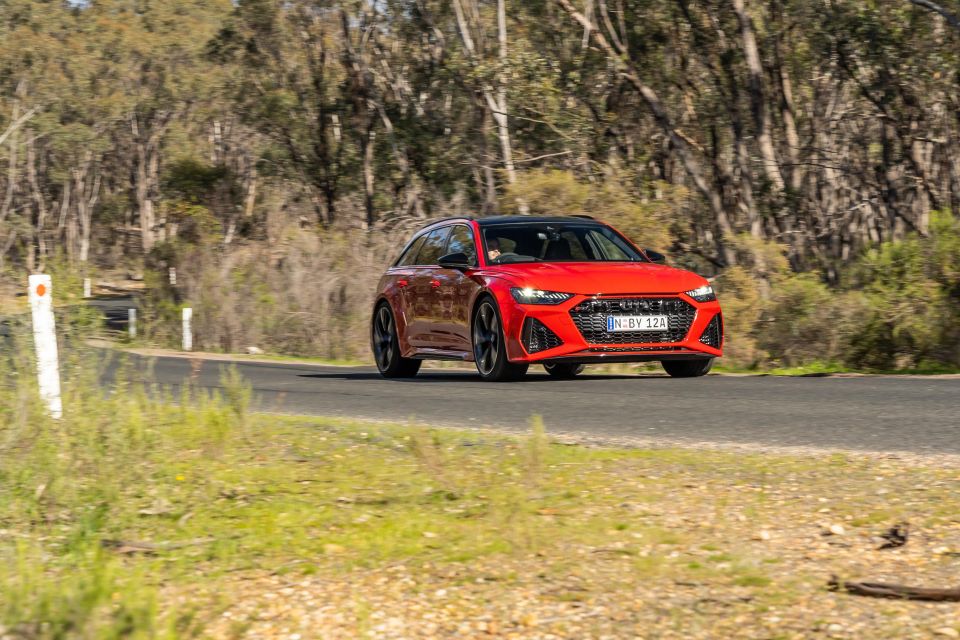
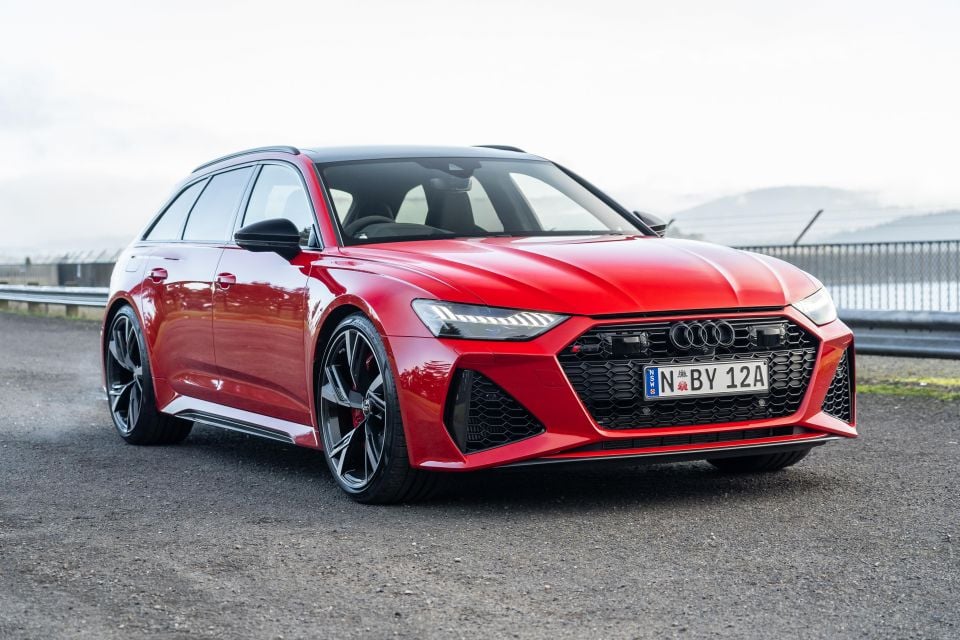

Founder
New from
$216,000
excl. on-roads

Founder
New from
$216,000
excl. on-roads


Founder
New from
$216,000
excl. on-roads

Founder
New from
$216,000
excl. on-roads
Quickly see how this car stacks up against its competition. Select any benchmark to see more details.
Where expert car reviews meet expert car buying – CarExpert gives you trusted advice, personalised service and real savings on your next new car.
I don’t despise SUVs – I totally get why people buy them, and why they feel safe(r) in them.
But one of the downsides to SUVs is that their performance credentials are compromised due to the higher centre of gravity, and the unavoidable realities of physics.
That’s why cars like the Holden Commodore SS wagon were so popular with Australian enthusiasts. They blended the practicality of an SUV with the performance of a sports car.
What if, though, you wanted the practicality of an SUV with the performance of a supercar? The Audi RS6 Avant is arguably the sole weapon of choice for solving such a dilemma.
While it was once available as a sedan, the RS6 is now exclusively sold globally as a twin-turbocharged V8 wagon. And where the last iteration of this car was one of my favourite road cars, this next generation has a huge expectation sitting on its shoulders.
Can it deliver? We did all the hard work to find out.
You don’t hear this often when it comes to uber-powerful German performance cars, but the 2020 Audi RS6 Avant has become cheaper in Australia. The prior asking price of $248,355 before on-road costs has been slashed to just $216,000 before on-roads.
The previous RS6 (the C7) finished in Australia with a sole model, the higher-performance RS6 Performance, which packed a helping of extra grunt to keep the RS6 relevant against the Mercedes-AMG E63 and BMW M5 Competition.

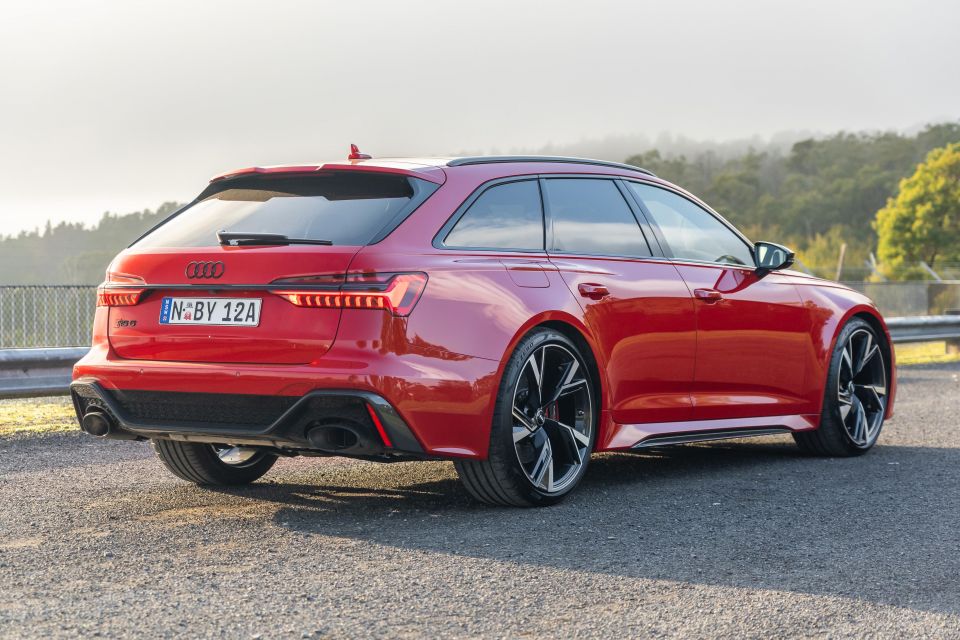
While Audi hasn’t confirmed it yet, it’s expected the C8 RS6 will also be offered with a higher-powered Performance option down the track.
Buyers can choose from eight colours with all but the crystal pearl Sebring Black colour free of charge. The crystal pearl will set you back an additional $1400. There’s also a number of matte paint options available for an additional $10,900.
Buy your new car without the stress. It's fast, simple and completely free.

Great service from Travis and team, second time I have used this business would not hesitate to recommend them to anyone
Craig C.
Purchased a Ford Ranger in Sunshine Coast, QLD
CarExpert helped Craig save thousands on his Ford Ranger, now let us save you on your next new car.
Find a dealAs you can imagine, Audi has thrown the feature book at the all-new Audi RS6. It’s one of the brand’s performance pinnacles, and one of its standard equipment pinnacles to boot.
On the outside you’ll find 22-inch alloy wheels, matrix LED headlights with laser lights, soft-close doors, proximity entry, LED daytime running lights, LED tail lights, a powered tailgate, privacy glass, front and rear parking sensors, air suspension with height adjustment, and a 360-degree camera.
The interior is lined with nappa leather, and there’s quad-zone climate control, electric seats and steering wheel adjustment, keyless start, wireless Apple CarPlay and Android Auto, wireless phone charging, LED ambient lighting, dual sunroofs, DAB+ digital radio, a 16-speaker sound system, heated and cooled front seats, and USB inputs.
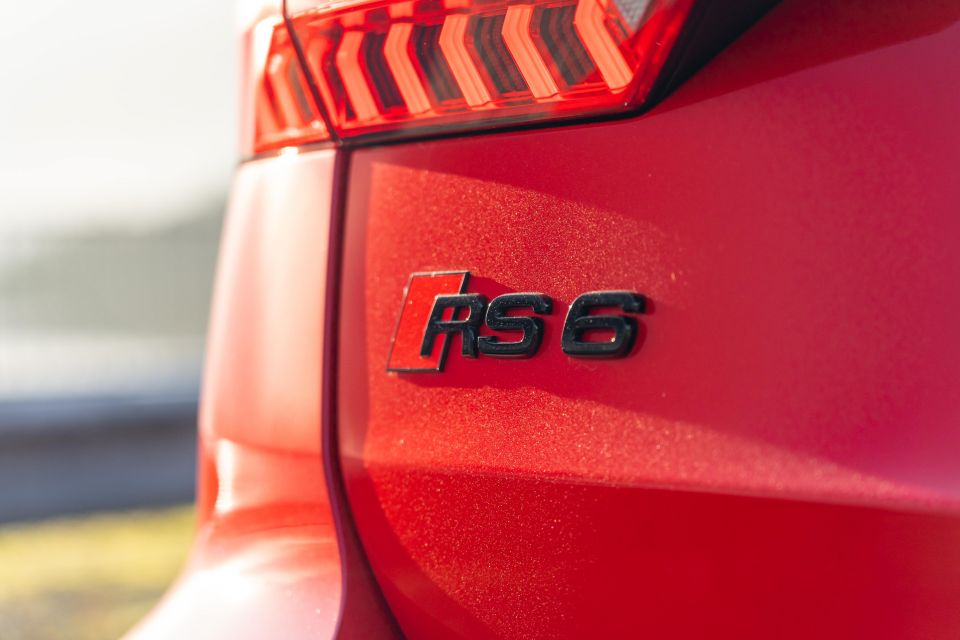
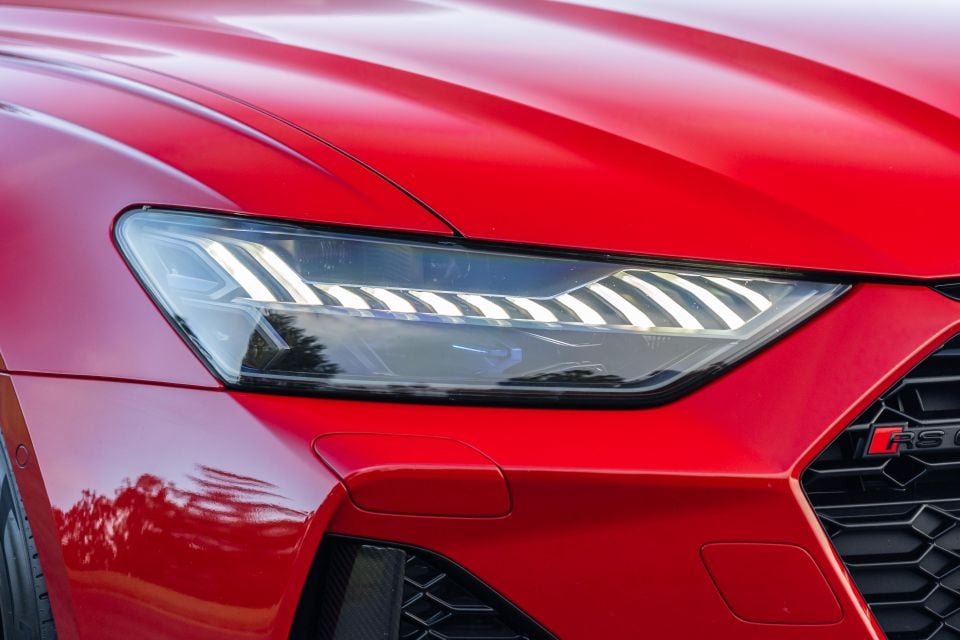
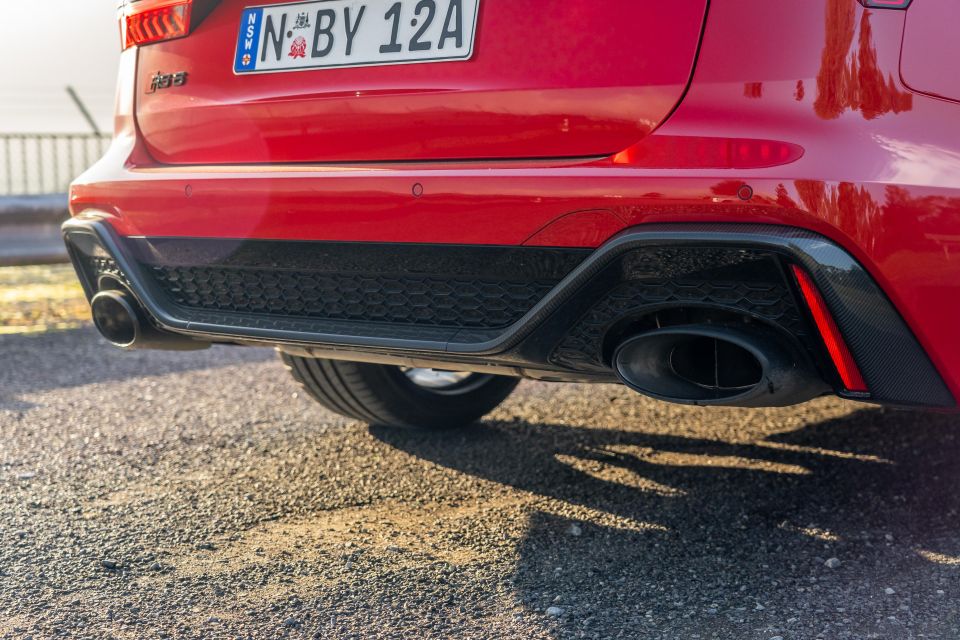
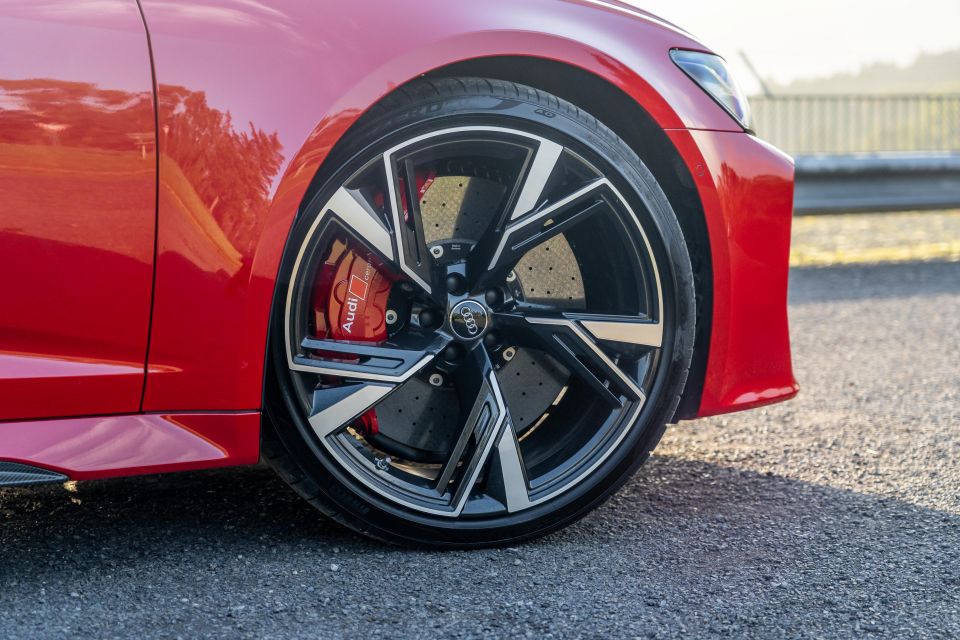
A number of option packages are also available (you can read more on our Audi RS6 and RS7 pricing and specifications), but I’ll run through the ones fitted to our test vehicle.
The Sensory Package ($11,000) adds an 1820-Watt, 19-speaker Bang and Olufsen sound system, Alcantara headlining, nappa leather airbag cover, heated outer rear seats, and sun blinds for the rear doors.
The RS Dynamic Plus package ($19,500) adds carbon ceramic brakes, which aid in an overall weight reduction of 34kg. The package also increases the top speed to 305km/h.
Adding the Carbon and Black Exterior Package ($8700) adds carbon fibre trim to the front spoiler, front side flaps, side sills and rear diffuser, in addition to matte black roof rails, exterior mirror caps in gloss black, and window trim strips in black.
The RS Design package ($2900) adds more Alcantara to the steering wheel with contrast red stitching, door armrests and the gear lever gaiter in nappa leather, centre console sides in Alcantara, seat belts with red stitching, and floor mats with RS logos.
RS Sport Suspension Plus with Dynamic Ride Control ($2850) deletes air suspension and instead adds coil springs with a tri-mode adaptive damper and diagonal hydraulic control lines, which also lowers the ride by an additional 4mm.
Carbon twill inlays ($1700) add cool open-pore style carbon inlays on the dashboard. Finally, our car had Audi rings and badges finished in gloss black ($700). These options collectively pushed the pricing up from $216,000 to $263,350 before on-road costs.
The Audi A6 range (including the S6 and RS6) were awarded five stars by ANCAP when the vehicle was crash tested in 2019.
The A6 scored a 93 per cent adult occupant protection rating, 85 per cent child occupant protection rating, 81 per cent vulnerable road user protection rating and a 78 per cent safety assist score.
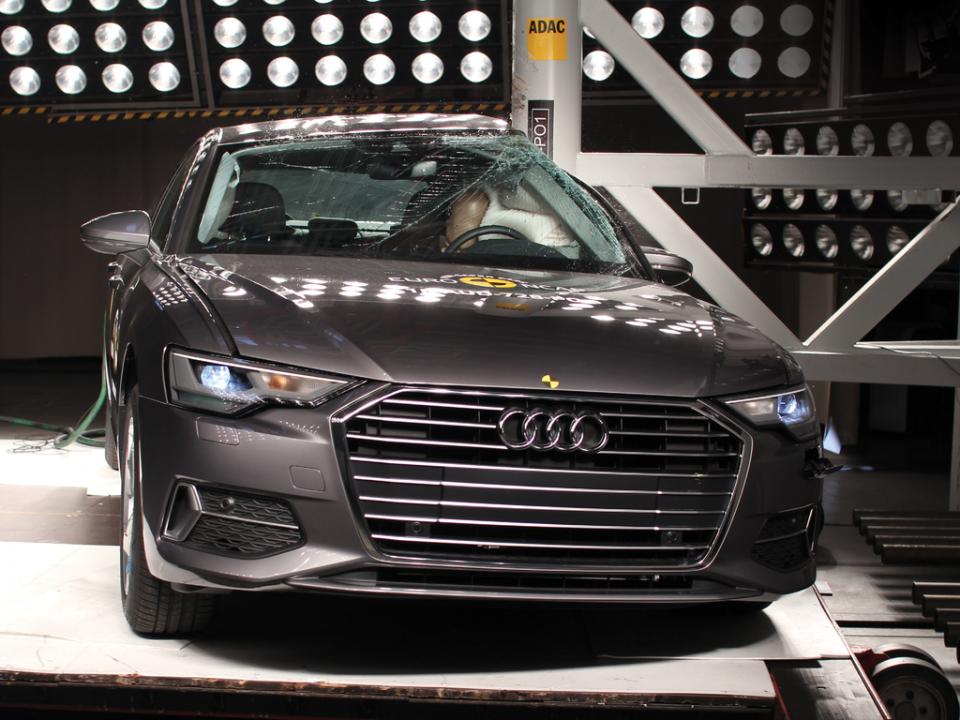
Standard safety equipment includes both low- and high-speed autonomous emergency braking (AEB) with vulnerable road user detection, lane keeping assistant, lane departure warning and emergency lane keeping.
Also standard are a suite of airbags including dual front airbags with side impact and head protection and second row coverage.
I’ve said this previously, but the perception of quality often comes down to the initial wow factor when you climb into a car. There’s also the matter of what people think when they first hop in…
I think on this front Audi has absolutely nailed the experience in the RS6. Certainly the specification we drove with the optional interior package and carbon twill inlays invokes a big wow when people get into the car for the first time.
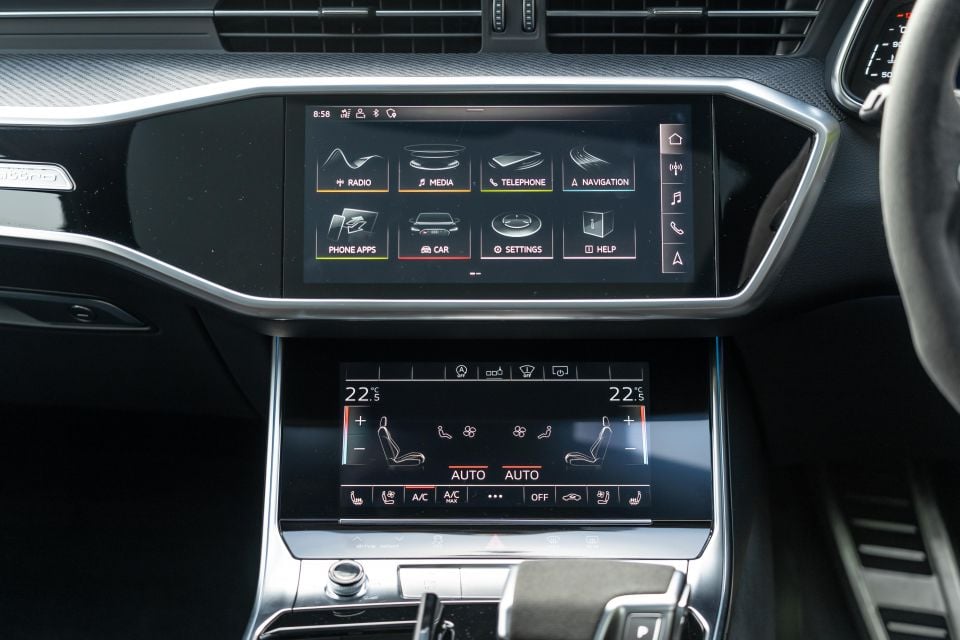
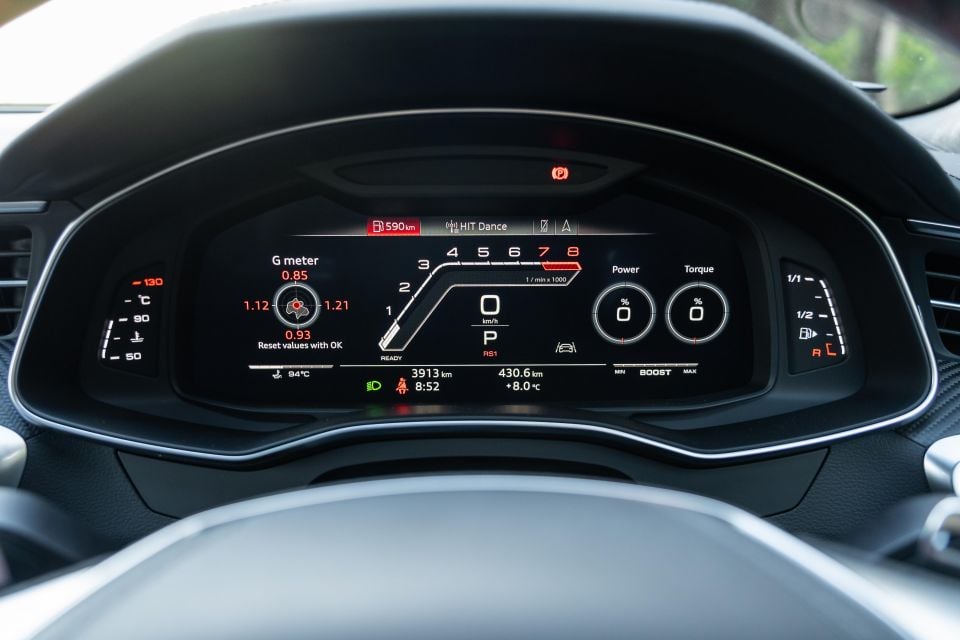
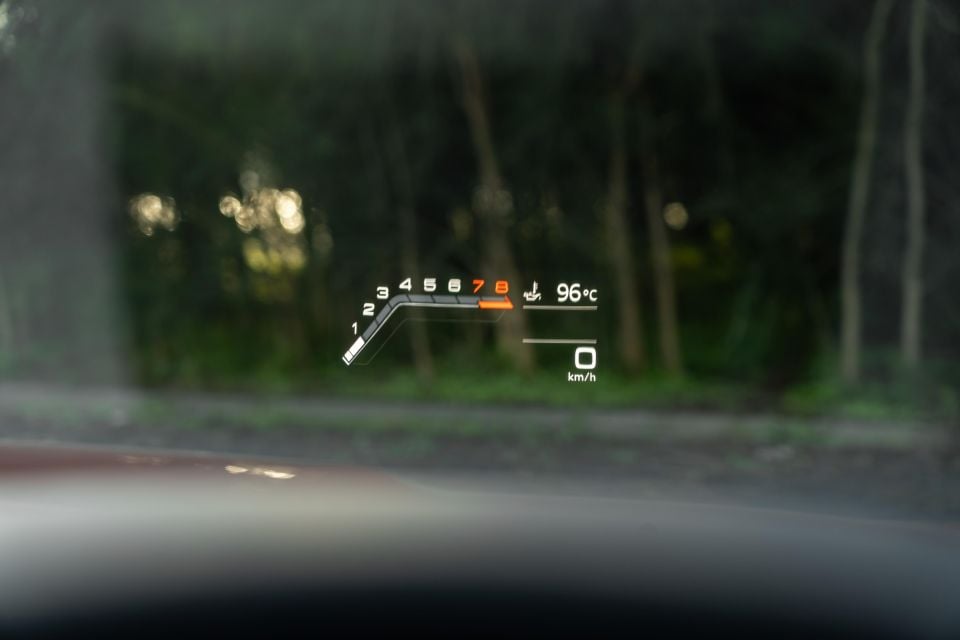
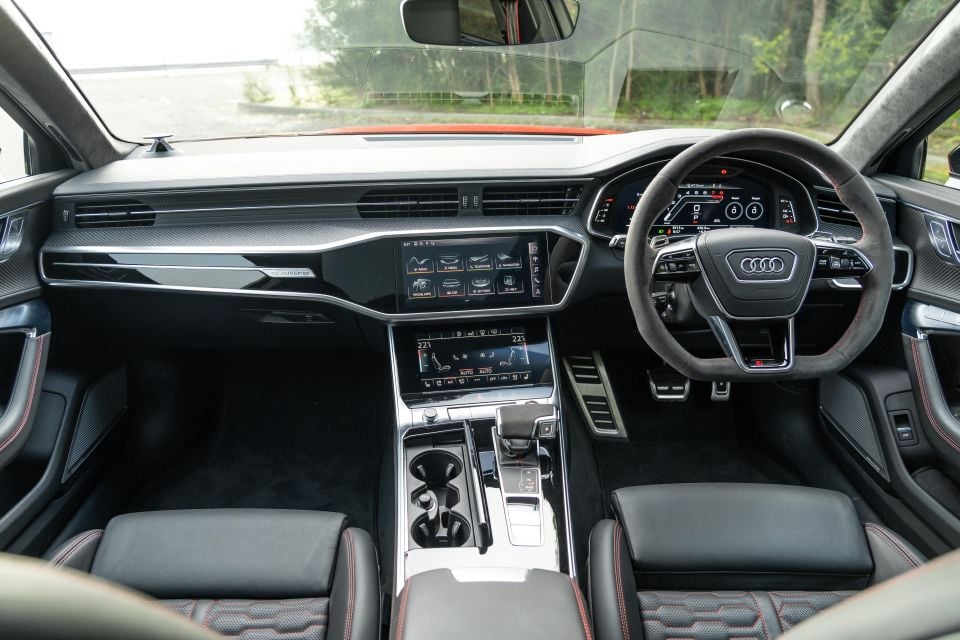
It’s one of the few new cars not fitted with a screen spanning half the dashboard. Instead, Audi has opted for a set of dual displays complete with haptic feedback. They measure 10.1 inches for the top screen, which controls infotainment, satellite navigation and car settings, and 8.6 inches for the lower screen, which contains climate controls and shortcuts to other functions.
Ahead of the driver is Audi’s excellent 12.3-inch Virtual Cockpit screen that uses high-end NVidia processors (similar to what you’d find in a gaming computer) to display high-resolution graphics.
The entire system is easy to use and integrates nicely with the car’s onboard voice recognition system. A nice addition to the package is wireless Apple CarPlay and (wired) Android Auto. Both are complemented by wireless phone charging, and the ability connect directly via USB.
My only complaint is the height of the two central screens. While tacked-on displays on the dashboard can look a little gaudy at times, they make viewing critical information easier. To change temperature in the RS6, the driver needs to take their eyes off the road and scan downwards to the lower touchscreen to make climate adjustments.
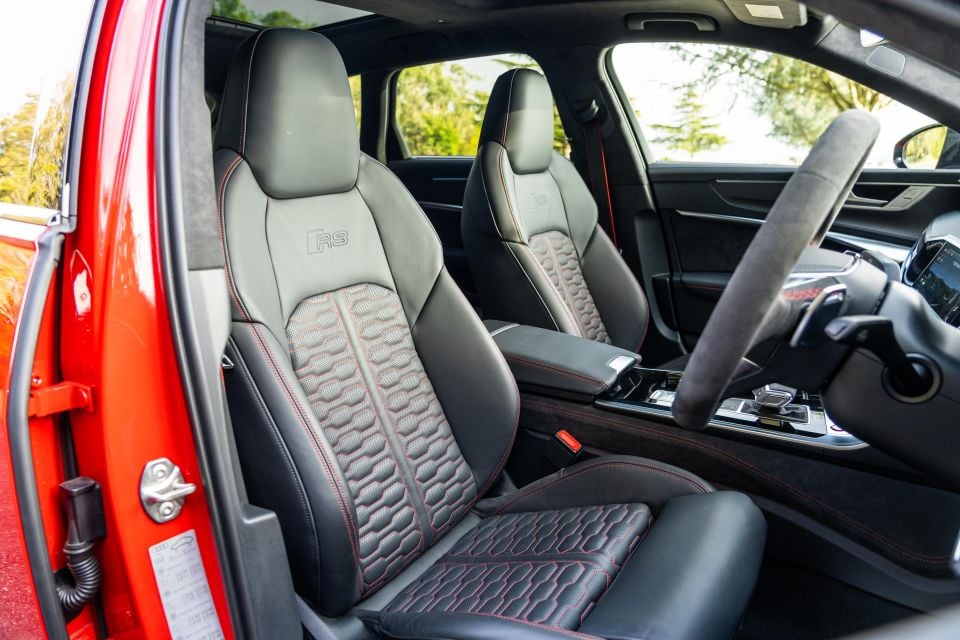
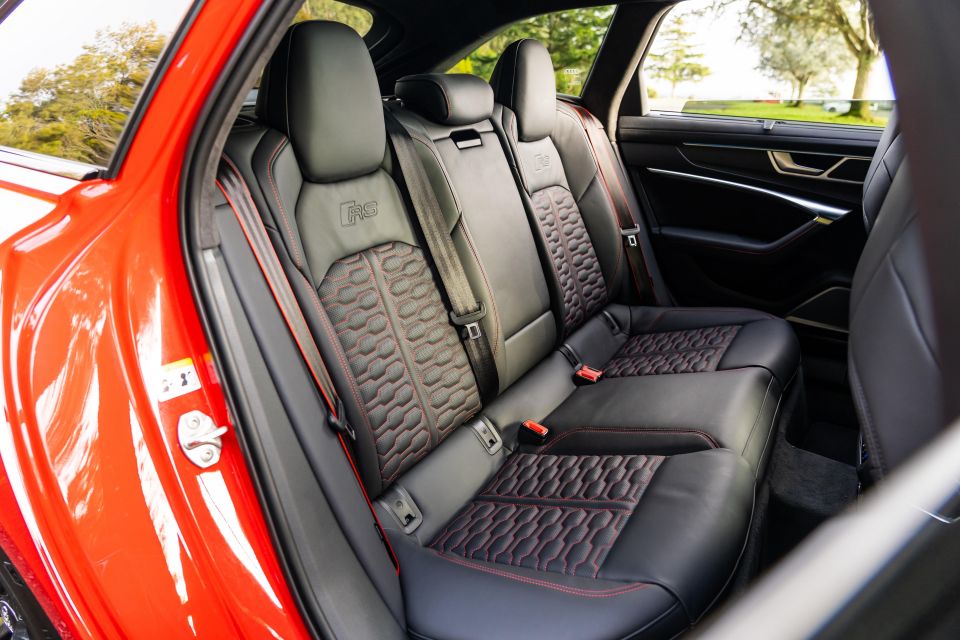
That grumble is partly made up for by the fragrance dispenser that offers a soothing scent inside the cabin and works in unison with a ioniser to keep things fresh. Oh, and the optional Bang and Olufsen sound system is ridiculously good.
Not only do the omnidirectional tweeters rise from the dashboard when the car is powered up, the 19-speaker array will fill your ears with glorious nosies if you’re sick of listening to the exhaust. It has deep bass and an ultra-high-quality upper range that mixes well with both analogue and digital sources.
The steering wheel sits nicely in the hands and comes with an RS mode selector offering the ability for the driver to move between RS1 and RS2 configurable drive modes, removing the need to hunt for the drive mode selector.
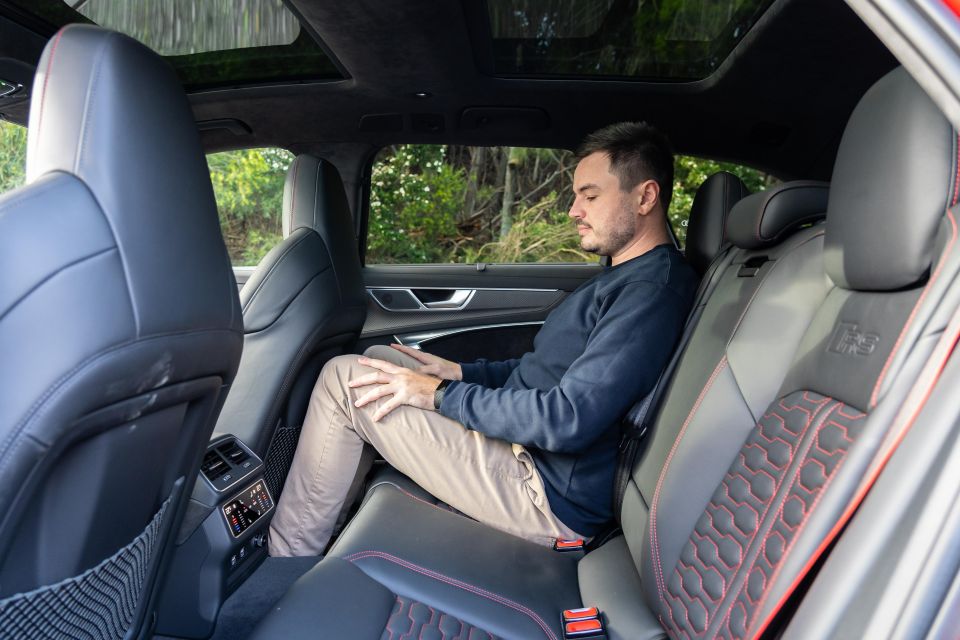
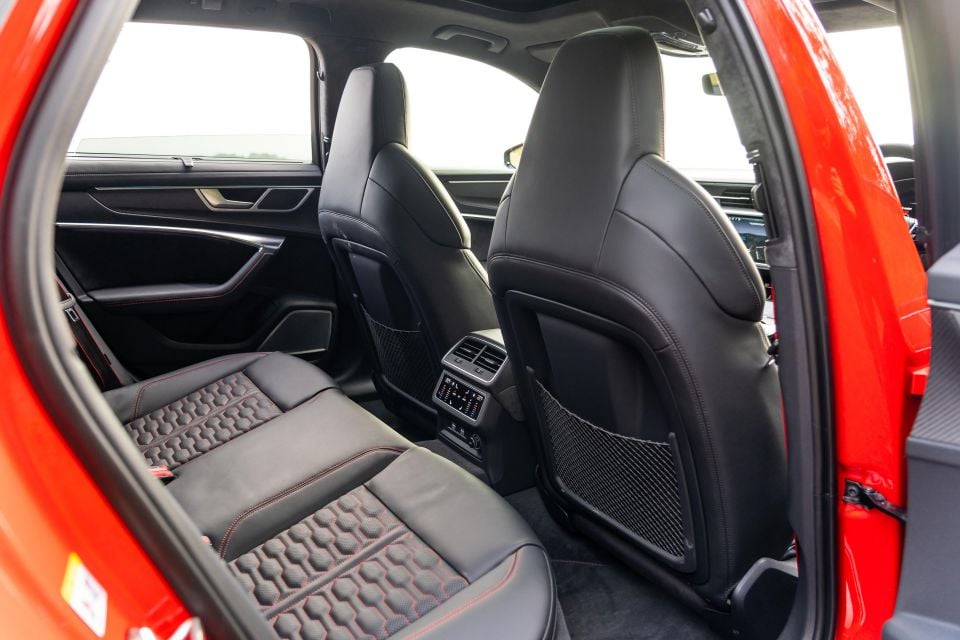
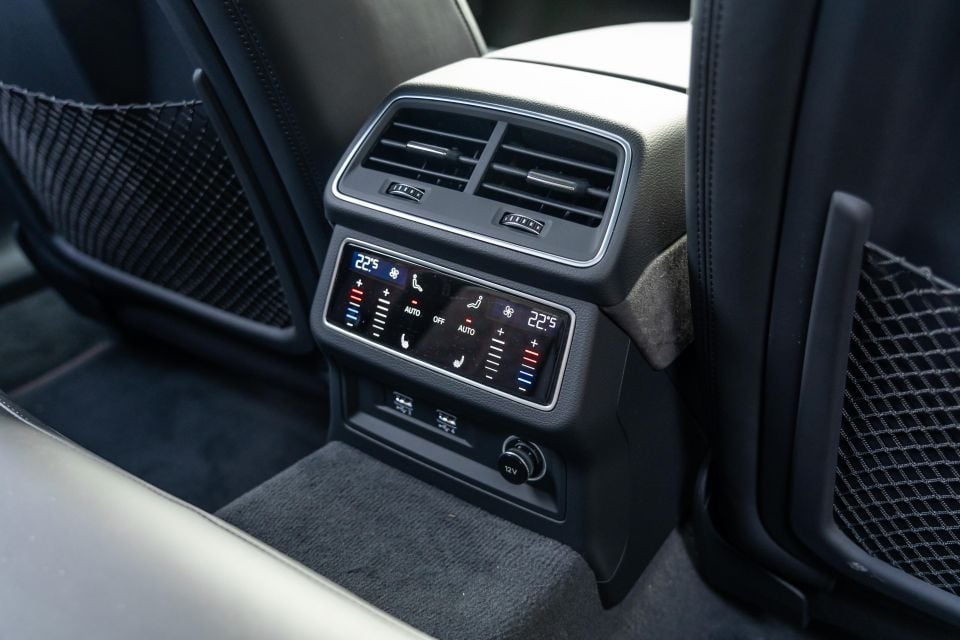
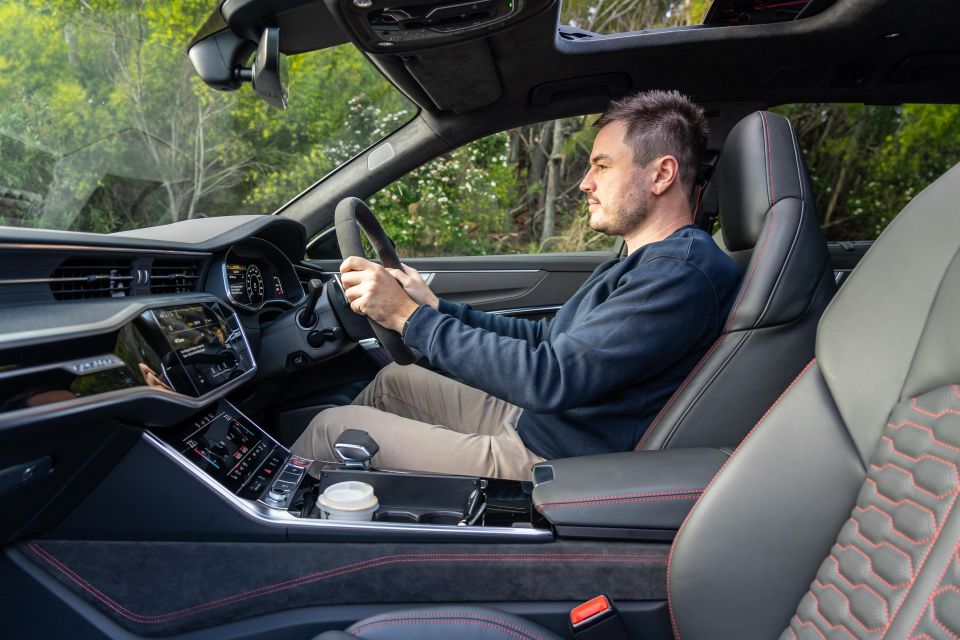
Outside of that, there’s plenty of leg- and headroom in the first row. The second row is equally as impressive with ample knee- and headroom for adults, but it’s let down slightly by a lack of toe room with the front seat at its lowest setting.
A feature that left us quite impressed was how the doors operated. Unlike conventional cars, which require a lever to be pulled for a door latch to release, the RS6 features an electronic door opener. It requires far less effort from the passengers and pops the door open with a light pull.
If the battery goes flat or the system malfunctions, a harder pull operates a mechanical lever to open the door. It teams with a system that detects oncoming cars, pedestrians, and cyclists, and prevents the door from opening and flashes a bright door-mounted light if the driver attempts to exit the vehicle with an oncoming object.
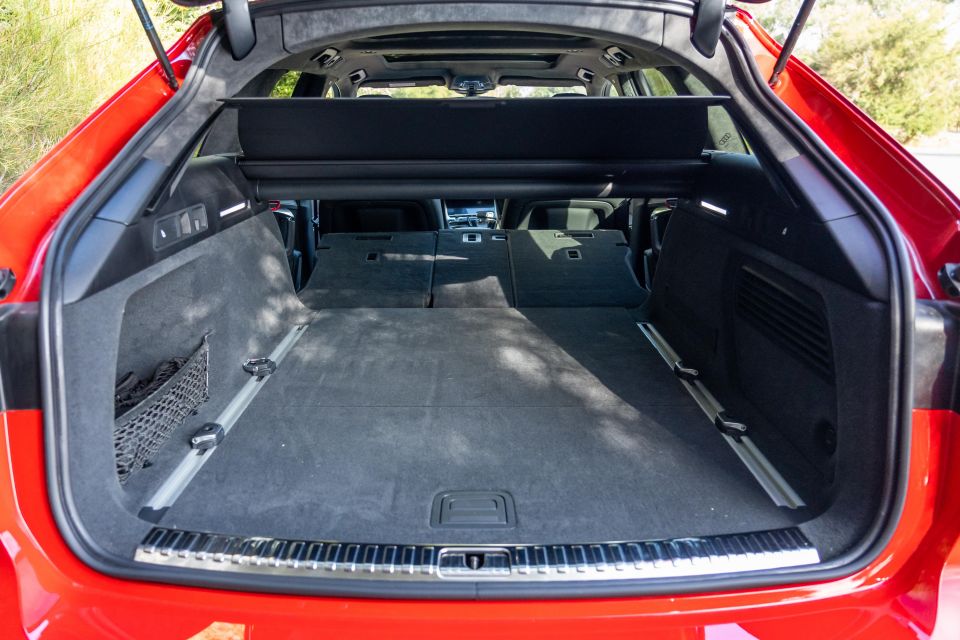
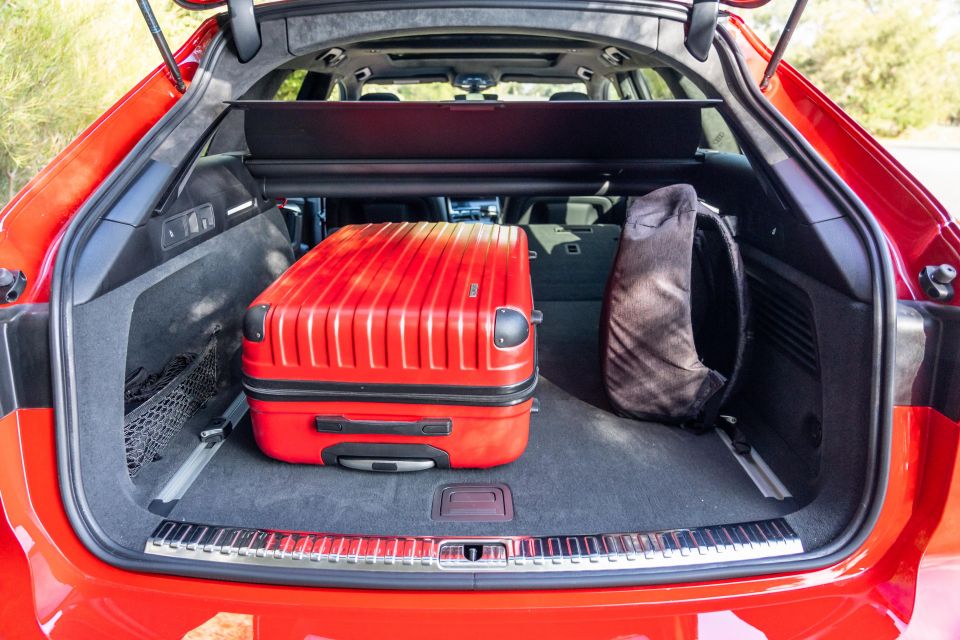
The third and fourth zones of climate control are located in the rear and are controlled with an LCD display that is also fitted with haptic feedback. ISOFIX points on the two outboard seats are joined by a centre armrest and two map pockets.
Cargo capacity comes in at an impressive 1680 litres with the second row folded flat, or 565 litres with the second row in place. Beneath the cargo floor is a tyre repair kit, a subwoofer and a small amount of storage.
Audi has developed a fire-breathing twin-turbocharged V8 engine for the RS6 to complement the work that’s gone into the chassis.
The 4.0-litre twin-turbocharged V8 engine produces 441kW of power and 800Nm of torque. It’s 4kW down on the previous generation of RS6, but more importantly it has 100Nm more torque.
It’s mated to an eight-speed automatic torque converter transmission and sends torque to all four wheels. During regular driving it sends 40 per cent of torque to the front axle and 60 per cent to the rear.
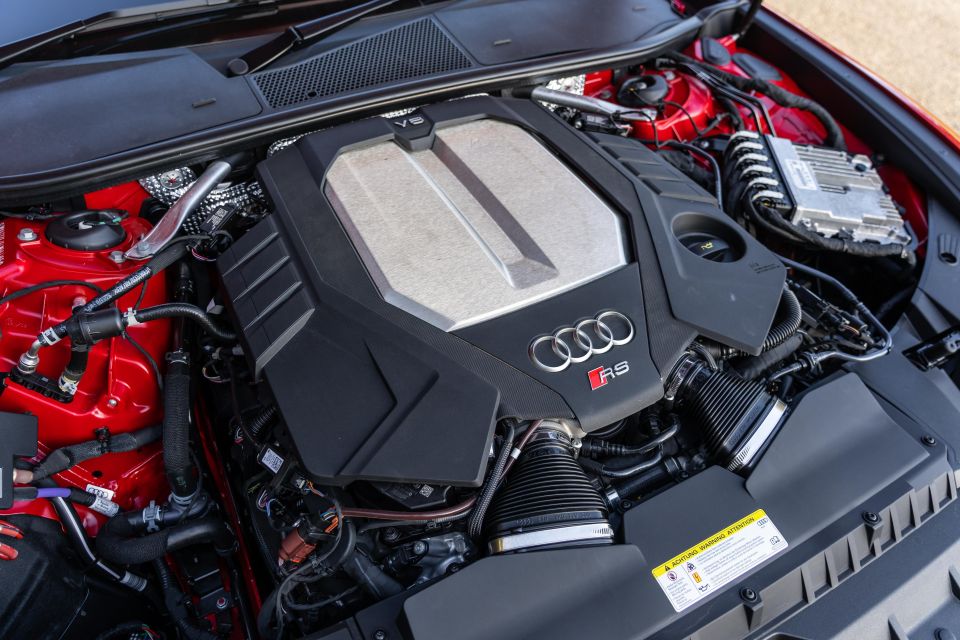
When required up to 70 per cent of torque can be directed to the front axle and up to 85 per cent to the rear – there’s no built in ‘drift mode’ like you’d find in the BMW M5 and Mercedes-AMG E63.
That results in a claimed 0-100km/h time of 3.6 seconds, which we matched during testing (you can see this in the video above). We also clocked an 11.7-second quarter-mile time for the RS6, with a terminal velocity of 193km/h.
A combined fuel economy of 11.7 litres of fuel per 100km is almost impossible to achieve if you enjoy listening to that cracking engine. We ended our week with the car sitting on a little under 13L/100km on the combined cycle – not bad if you ask me. And 98RON premium unleaded fuel is required at a minimum.
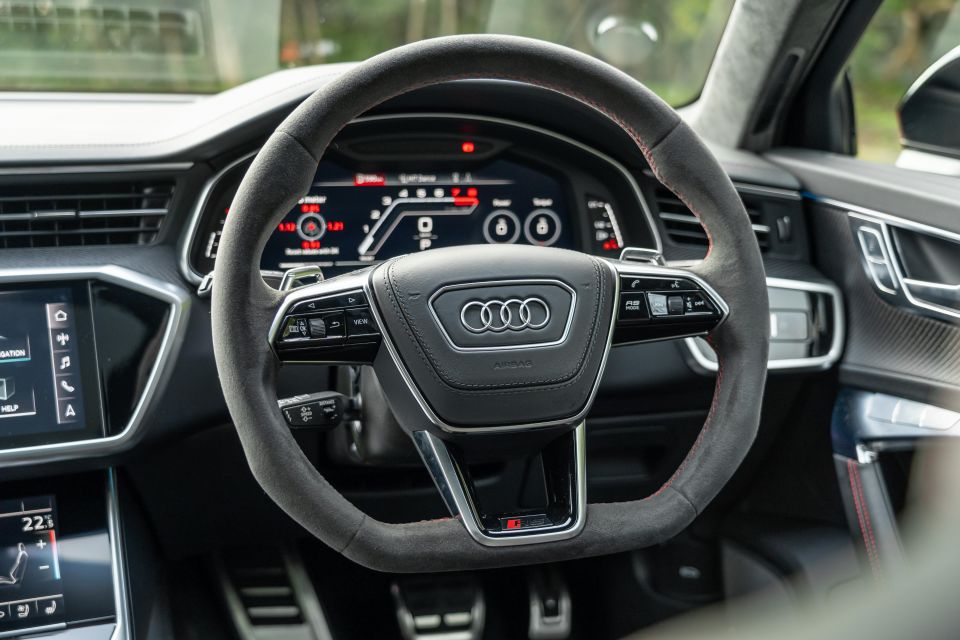
Part of the reason the RS6 can be so efficient is due to cylinder-on-demand technology that can shut down four of the eight cylinders under light throttle. It’s also coupled with a 48V mild hybrid system that can switch the car off between 55 and 160km/h, with the idle stop system activating from 22km/h while decelerating.
While coasting, the 48V system can utilise an on-board lithium ion battery to power the system’s safety and operating systems, meaning no fuel is required to keep the car coasting. Up to 12kW of energy can be recovered while coasting or during braking.
Let’s kick off with the low-speed stuff. The RS6 comes standard with adaptive air suspension that sits it 20mm lower than a regular A6, and lowers by a further 10mm when the car is placed into dynamic mode.
Our test car was fitted with the optional RS Sport Suspension with Dynamic Ride Control, which deletes the air chamber and replaces it with a five-link coil-spring suspension setup with three-stage adaptive damping. It also offers diagonal and entirely mechanical hydraulic damping via a central control valve.
In addition to lowering the suspension by a further 4mm in comparison to the air suspension setup, it offers a mechanical damping system that responds to acceleration, deceleration and cornering forces in a more natural way. Turning into a right-hander imparts load on the left of the car, which causes the hydraulic fluid in the system to pass through a set of central control valves that can then operate to adjust the diagonally-opposed wheel.
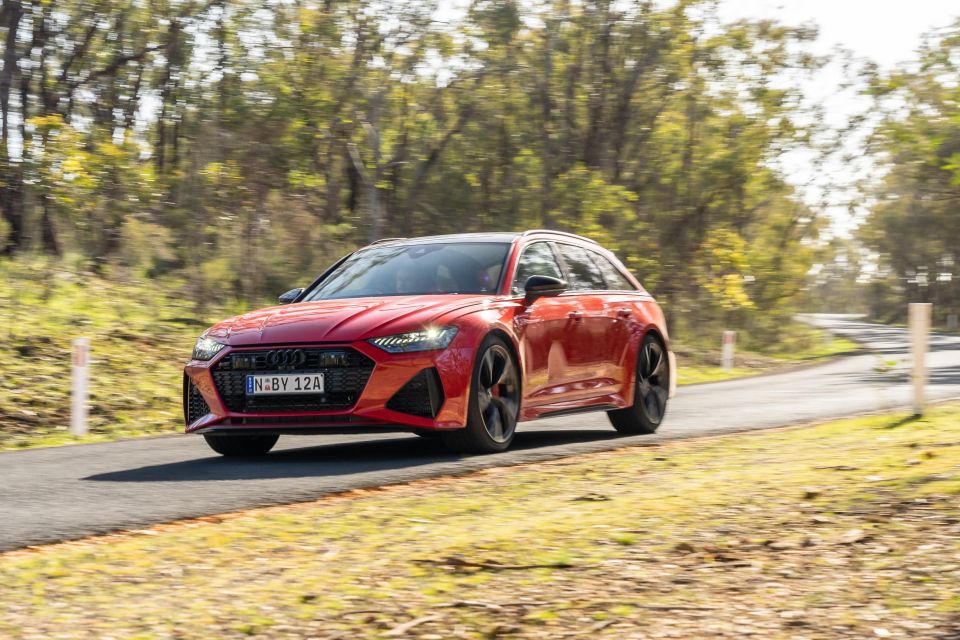
What does that mean for low speed driving? Not a great deal really – while we didn’t get the chance to drive an RS6 with straight air suspension, our test car rode stupidly well in and around the city with the optional coil-sprung setup. It feels on the firmer side of comfortable in comfort mode, but it’s far from sporty or overly firm.
This is all despite the car riding on mammoth 22-inch alloy wheels. So it was great to see that this can be used as a daily driver in that respect. The start/stop system is also one of the best we’ve tested. The 48V mild hybrid system uses a belt-driven starter-generator that seamlessly provides power and torque as required to kick the engine over smoothly.
With front and rear parking sensors, a 360 degree camera, and a litany of sensors around the car, it’s easy to see out of when parking and working your way through the city. The steering is also light in comfort mode, which means it really is a fuss-free affair at low speeds.
It’s a similar story out on the open road. The RS6 cruises easily at highway speeds and while there is a level of noticeable tyre noise in the cabin, it’s not unbearable, and is about what you’d expect with this type of car.
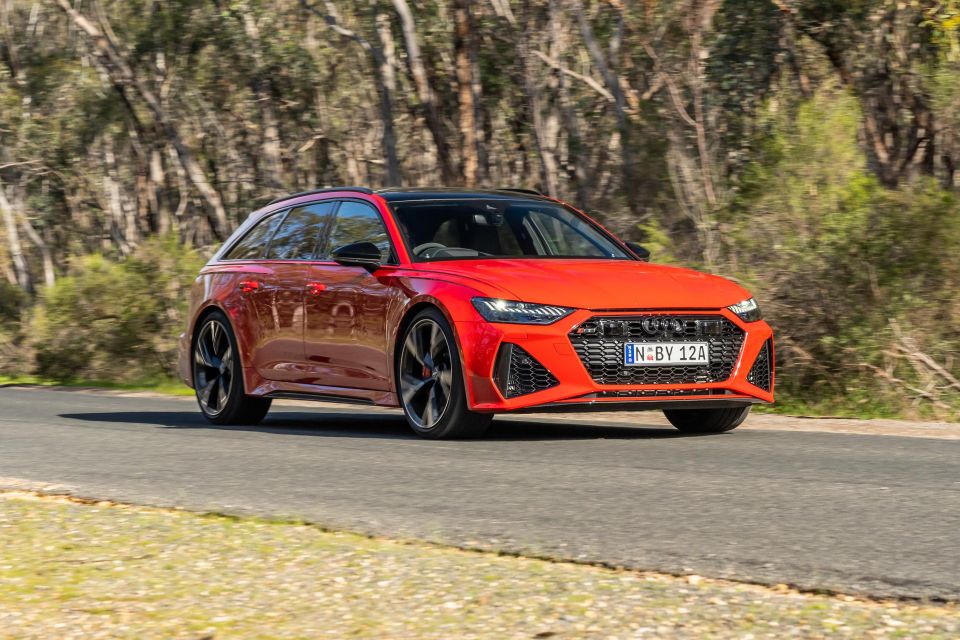
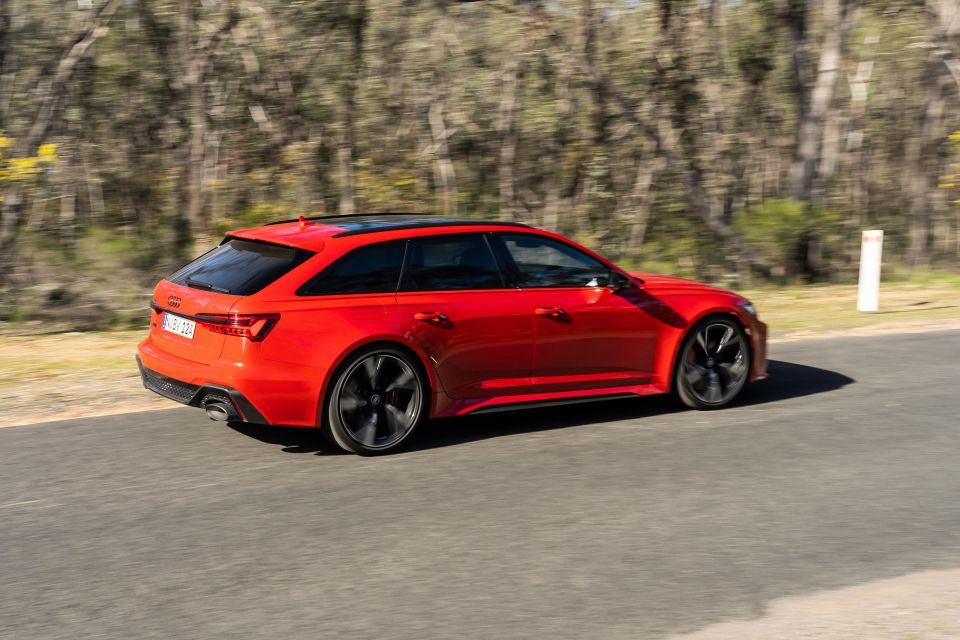
Where it all really comes together is when you sink the right boot in. Drive mode presets that can be accessed via the steering wheel allow the driver to instantly switch between settings. Everything from exhaust sound to steering feel can be adjusted on the fly, and a new RS monitor shows whether components such as the brakes and differential are at operating temperature.
Speaking of the brakes, the standard steel brakes measure 420mm at the front and 370mm at the rear. But the optional carbon ceramic brake package takes the cake. The brakes are the equal biggest brakes ever fitted to a production car and measure 440mm at the front with 10-piston calipers, while the rear comes in at 370mm, for a combined weight saving of 34kg.
The most aggressive drive mode setting puts the car into maximum attack mode. The 800Nm torque peak is brutally delivered between 2050 and 4500rpm, and as each gear is selected it feels like it’ll never end. The optional brakes bring with them an increased top speed of 305km/h, which I’m sure wouldn’t be hard to achieve with enough room.
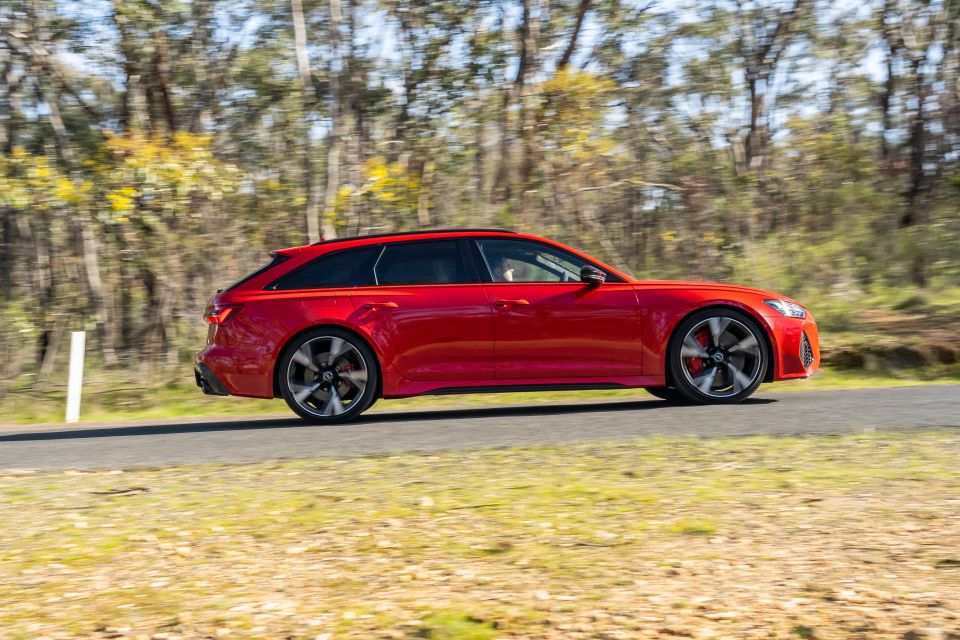
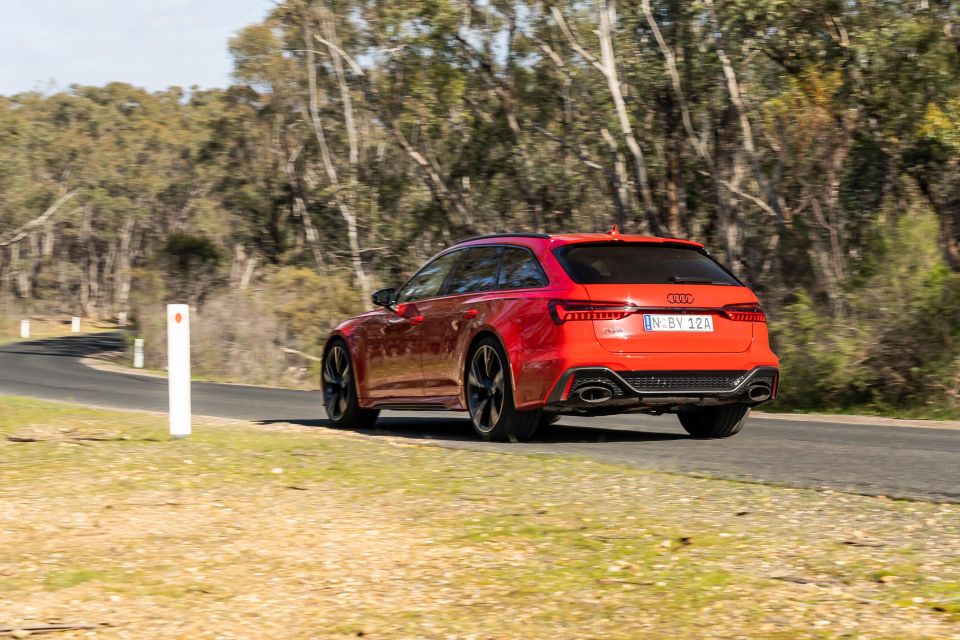
There’s a minor hint of turbo lag before it hits hard, but it’s fairly imperceptible and when it comes on full boost it’s like a rollercoaster as it rows through the cogs.
Cornering is hard to explain – this car weights just over 2250kg and shouldn’t corner anywhere near as aggressively as it does. It’s not really built for a motorkhana style circuit, but find a set of sweeping bends and you can confidently stay stuck into the throttle as the quattro all-wheel drive system takes care of the rest.
The 285mm rubber all round does a resounding job of keeping everything together, while the body sits dead flat through corners – it truly is remarkable.
If there’s one complaint we had, it’s with the steering. It doesn’t quite have the sharp steering feel of something like a BMW M5 and can feel a little numb about centre – but it’s only a minor complaint.
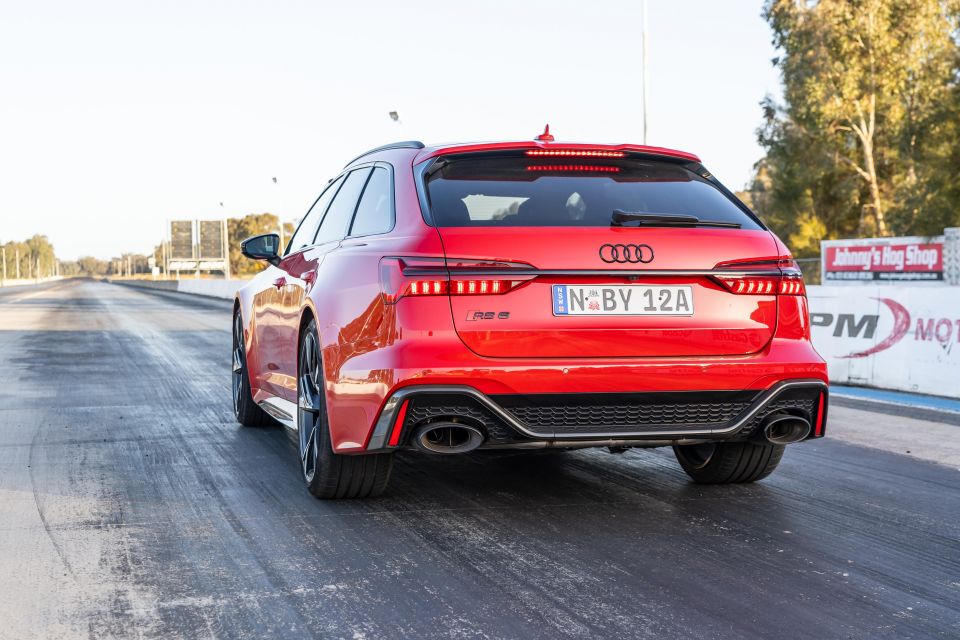
Where expert car reviews meet expert car buying – CarExpert gives you trusted advice, personalised service and real savings on your next new car.
What about the noise? It’s surprisingly quiet until you open the flaps. Then it makes a pretty epic sound as you fly buzz bystanders with the engine under load. While there are only two visible exhaust pipes (measuring 200mm in diameter), they have two regular outlets within, along with two bi-modal flaps that open in the RS mode or when manually selected.
During performance testing, we were impressed to see a 0-100km/h time of 4.6 seconds with the idle stop system active. That means you can stand on the throttle with the engine off and still hit 100km/h quicker than some cars with launch control running.
Activate launch control in the RS6 (by entering RS2, and holding the brake and throttle) and it’ll do 0-100km/h in 3.6 seconds without too many dramas.

Brake pedal feel is excellent and unlike carbon ceramic brakes of yesteryear that took time to warm up before they were effective at low speeds, these brakes feel just like any other car. They come in most handy if you’re attacking a track or on a downhill mountain run.
Their ability to operate at a higher heat threshold than steel will come in handy if you’re doing that type of aggressive driving. They’re also more durable than steel brakes, so you should see a longer service life.
Unlike Mercedes-Benz which offers a five-year warranty, Audi only sells the RS6 with a three-year, unlimited-kilometre warranty.
Servicing occurs every 12 months or 15,000km. A prepaid three-year service plan costs $2380, while a five-year plan can be pre-purchased for $3910.
That comes in at an average cost of $793 when prepaid for three years and $782 when prepaid for five years.
What can I say, it’s hard to find any fault with the RS6. If you put the performance to one side it’s highly practical, looks stunning, and comes with the latest technology you’d would expect on a high-end vehicle.

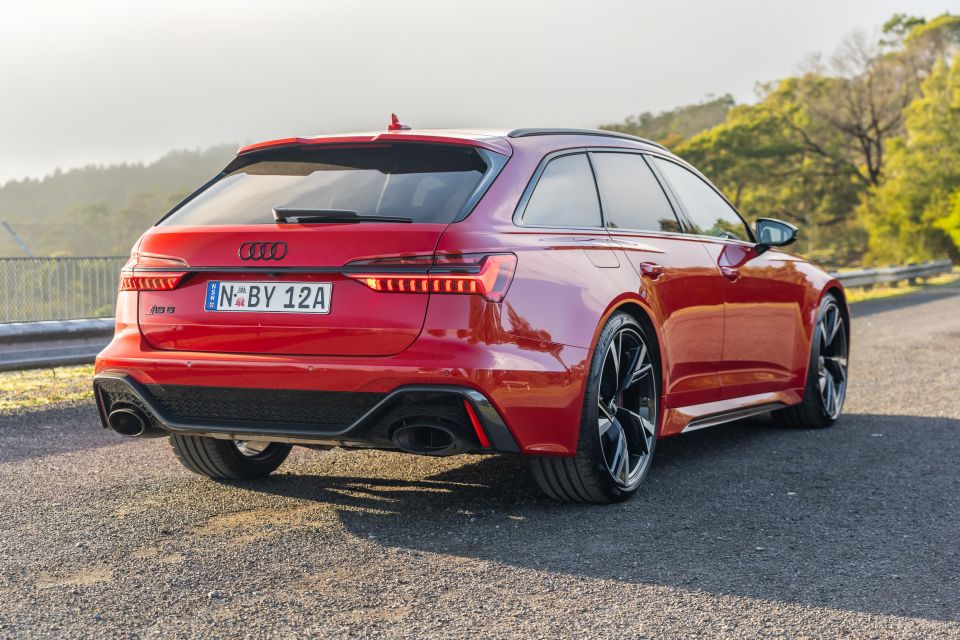

Throw the performance into the mix and you have a station wagon with the credentials of a supercar. It’s stupidly quick in a straight line, will do 305km/h with enough room, and handles corners unlike anything we’ve experienced recently.
It’s now more affordable – although we think it’s worth ticking the $11,000 Sensory Package to gain the sound system, and if you’re planning on hitting the race track, the carbon brakes are a must.
The Audi RS6 has for a long time been – and remains – one of my favourite cars. If I had enough room, I’d be adding one of these to my garage in a heartbeat – and I don’t even have kids, or access to kids to need a car this size!
Where expert car reviews meet expert car buying – CarExpert gives you trusted advice, personalised service and real savings on your next new car.
Paul Maric is a CarExpert co-founder and YouTube host, combining engineering expertise with two decades in automotive journalism.


CarExpert.com.au
1 Hour Ago


Max Davies
7 Days Ago
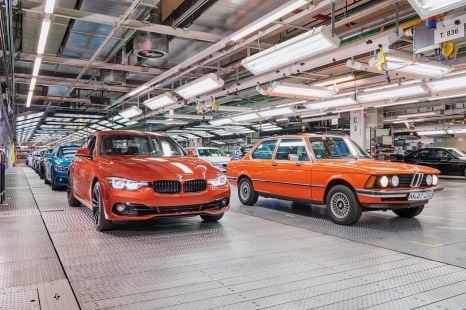

Ben Zachariah
9 Days Ago
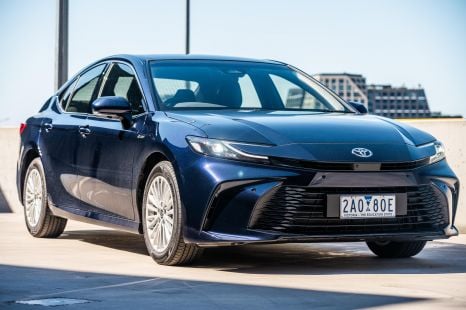

William Stopford
2 Months Ago
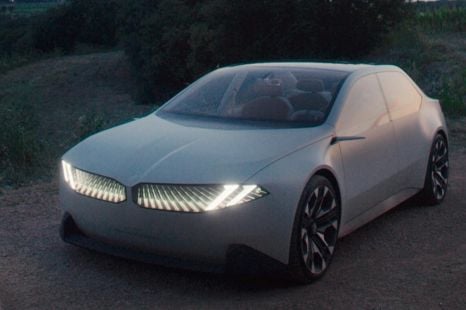

Damion Smy
2 Months Ago


Max Davies
2 Months Ago